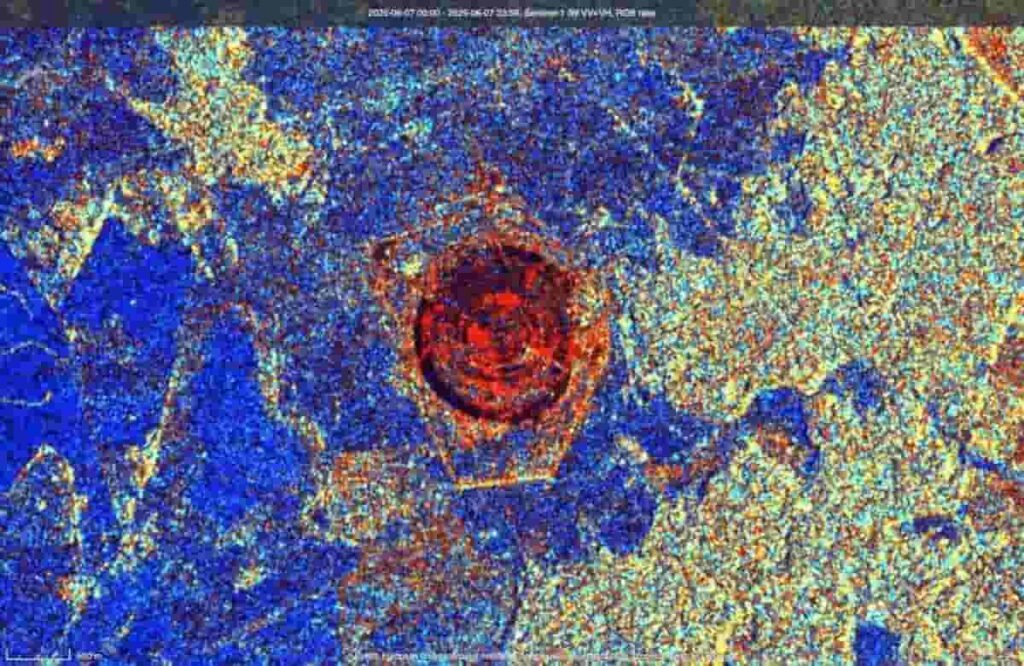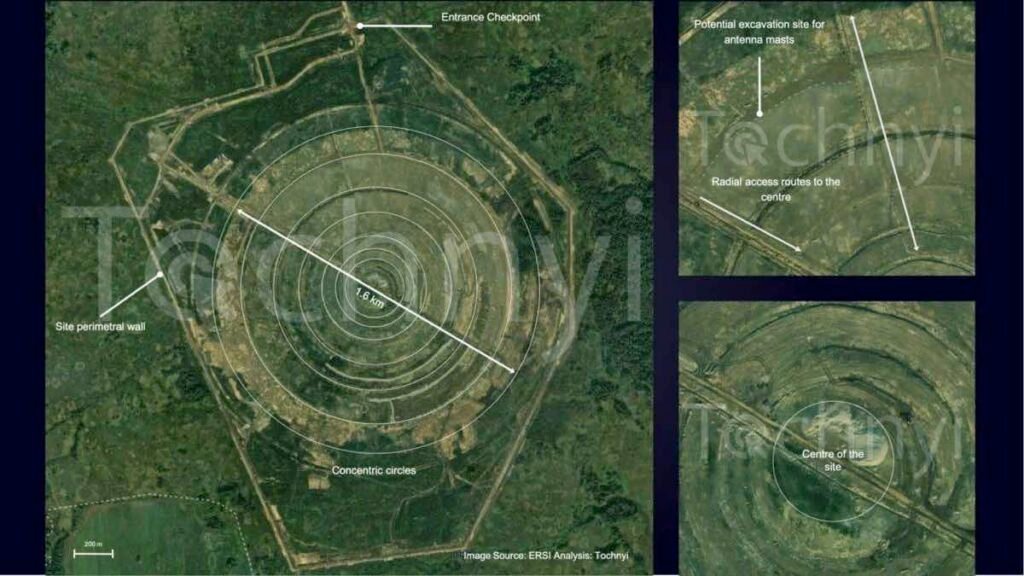A New Spy Hub on NATO’s Border
Satellite images analyzed by OSINT groups confirm that Russia is building a massive signals intelligence (SIGINT) complex just 25 km from Poland, in the Kaliningrad region. The structure resembles the Cold War–era Wullenweber antenna arrays, but on a scale not seen in decades: a circular installation stretching up to 1.6 km in diameter.
The construction began in March 2023 and is now nearing completion. The site consists of concentric excavations, radial access roads converging at a central hub, and heavy security perimeters. Analysts suggest its main purpose is to intercept, locate, and analyze a wide range of electronic communications — from military radios to civilian signals, radar emissions, and even satellite downlinks.
Technical Features
- Diameter: approx. 1.6 km, larger than many historic CDAA (Circularly Disposed Antenna Arrays).
- Coverage: potential reach of thousands of kilometers across Europe.
- Capabilities: monitoring NATO communications, cyber operations, and electronic warfare (EW), including jamming and spoofing.

Strategic Implications
This development raises serious concerns for NATO. By positioning such an array in Kaliningrad — already one of the most militarized areas in Europe, home to Iskander-M missiles, S-400 systems, and Russia’s Baltic Fleet — Moscow strengthens its intelligence posture.
- For NATO: a direct threat to operational secrecy along the eastern flank. Russian operators could locate units, intercept command traffic, and disrupt communications during crises.
- Historical echo: the project revives Cold War methods of surveillance, now upgraded with AI-enhanced analysis and modern EW tools.
- Regional impact: adds pressure to Poland, Lithuania, and the Baltic states, where concerns over hybrid warfare and cyber-attacks are already high.

OSINT Verification
The installation was first spotted by OSINT collective Tochnyi.info, using open satellite databases. International media and defense analysts quickly confirmed the findings. Sequential images show extensive land clearing, radial trenching, and rapid construction over two years.
Geopolitical Examples
- Baltic Region: This antenna could monitor NATO air policing missions over the Baltics, tracking radio chatter between allied aircraft.
- Ukraine War Spillover: Signals from Polish or Romanian military support hubs might be intercepted, aiding Russia’s strategic picture.
- Space Domain: Interception of satellite communications could give Moscow access to commercial or even military data links.
Kaliningrad’s new array signals a return to large-scale electronic surveillance infrastructure, a reminder that Cold War-style listening posts are once again relevant. But unlike their 20th-century predecessors, these systems are now integrated into an environment of cyber operations, AI-driven data fusion, and hybrid conflict.
For NATO, the challenge is not just technological but strategic: ensuring that its eastern flank can remain resilient under a barrage of invisible, electronic threats.





